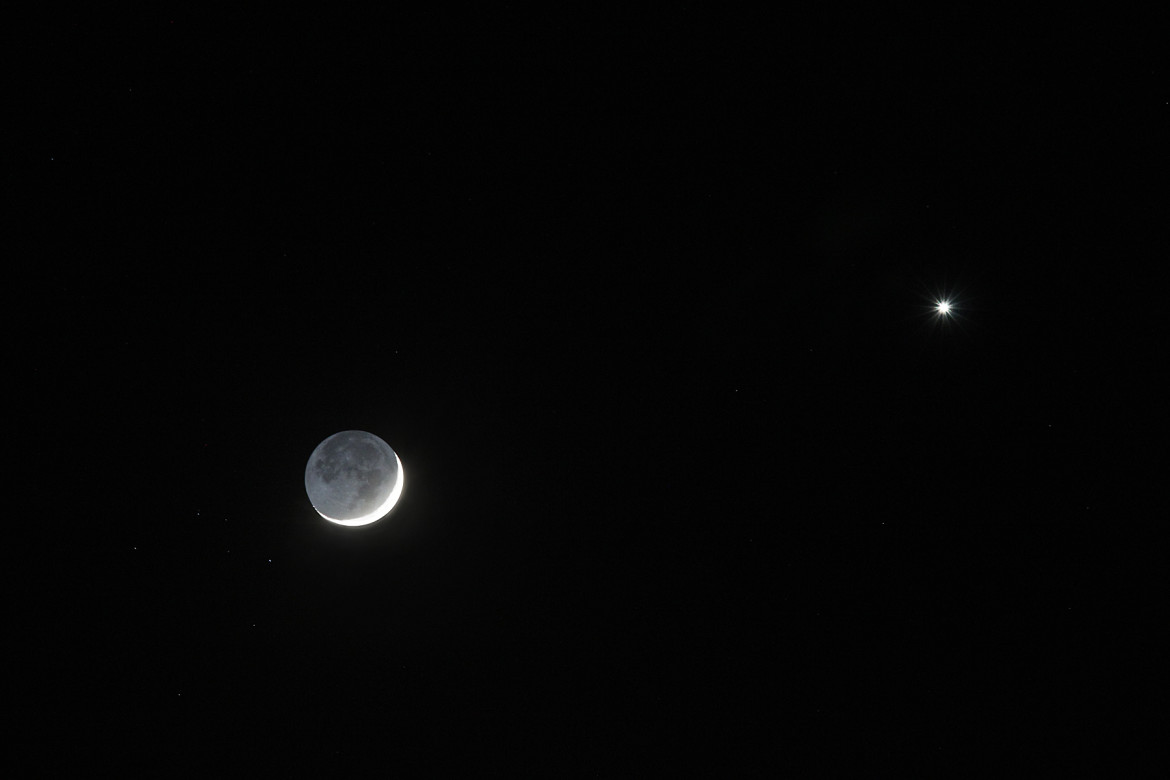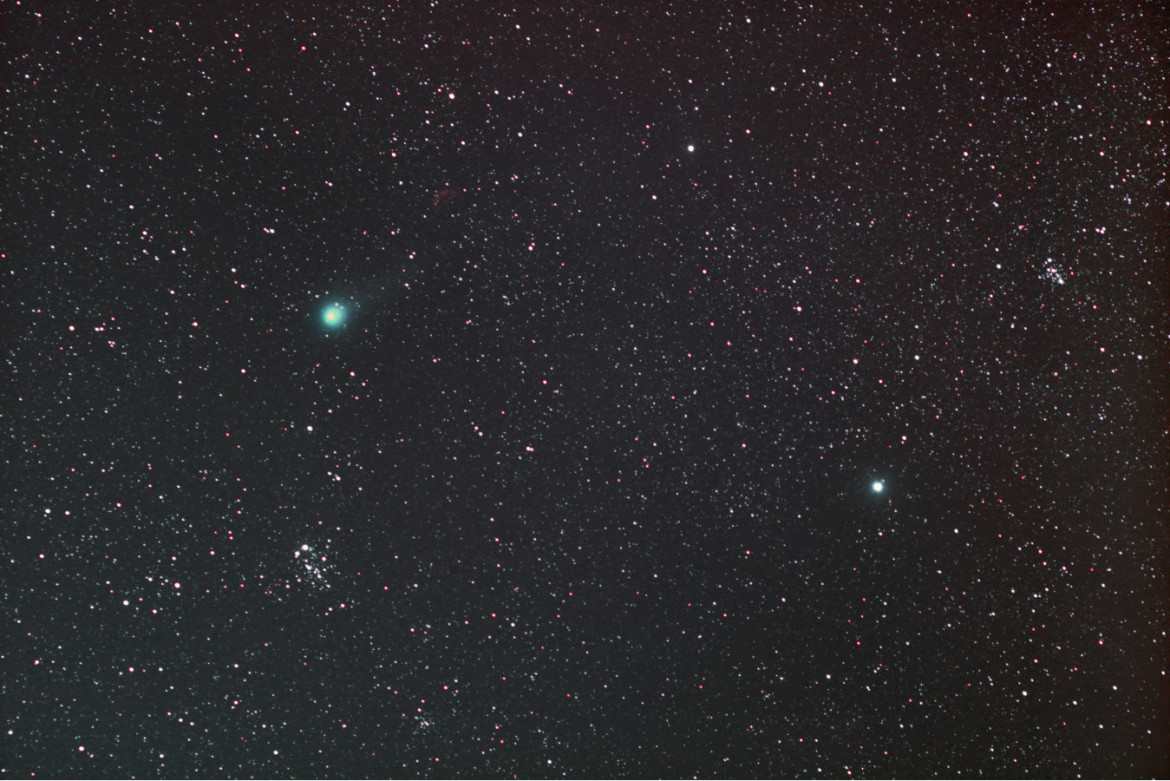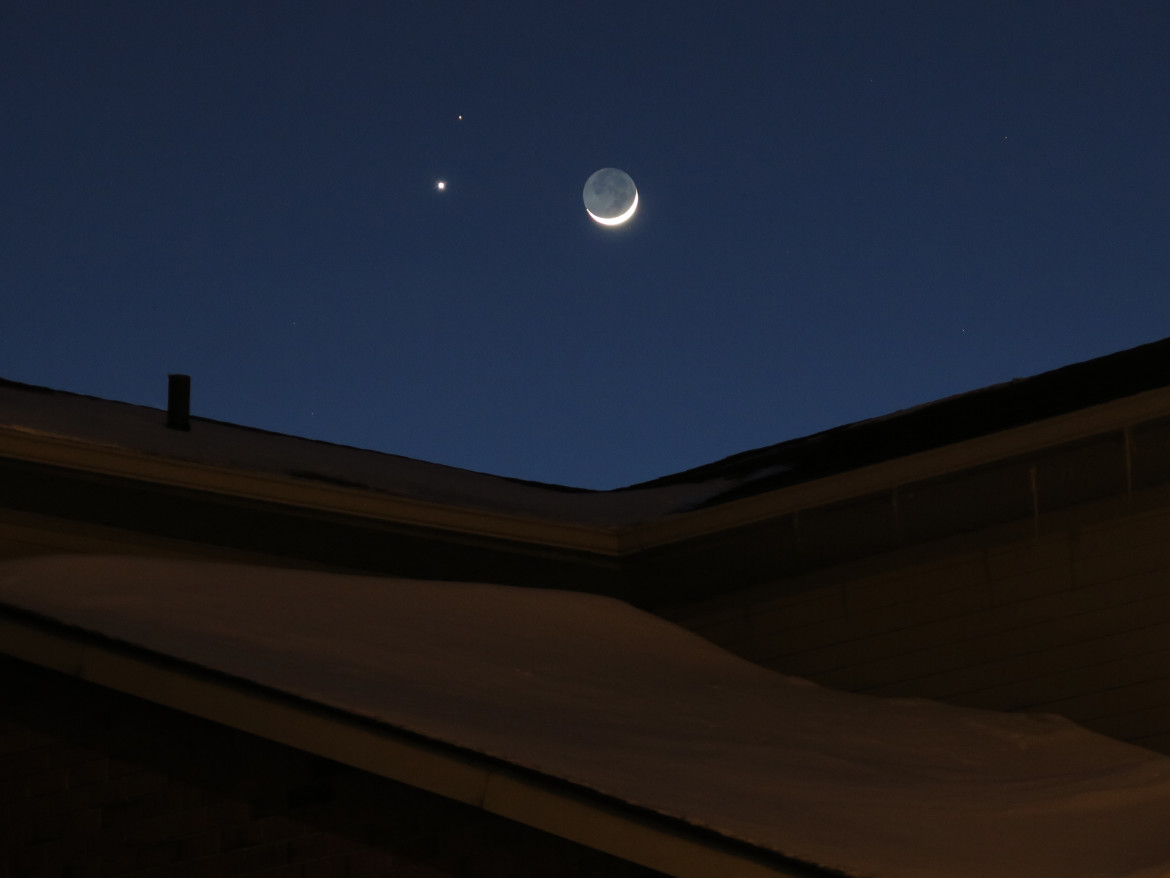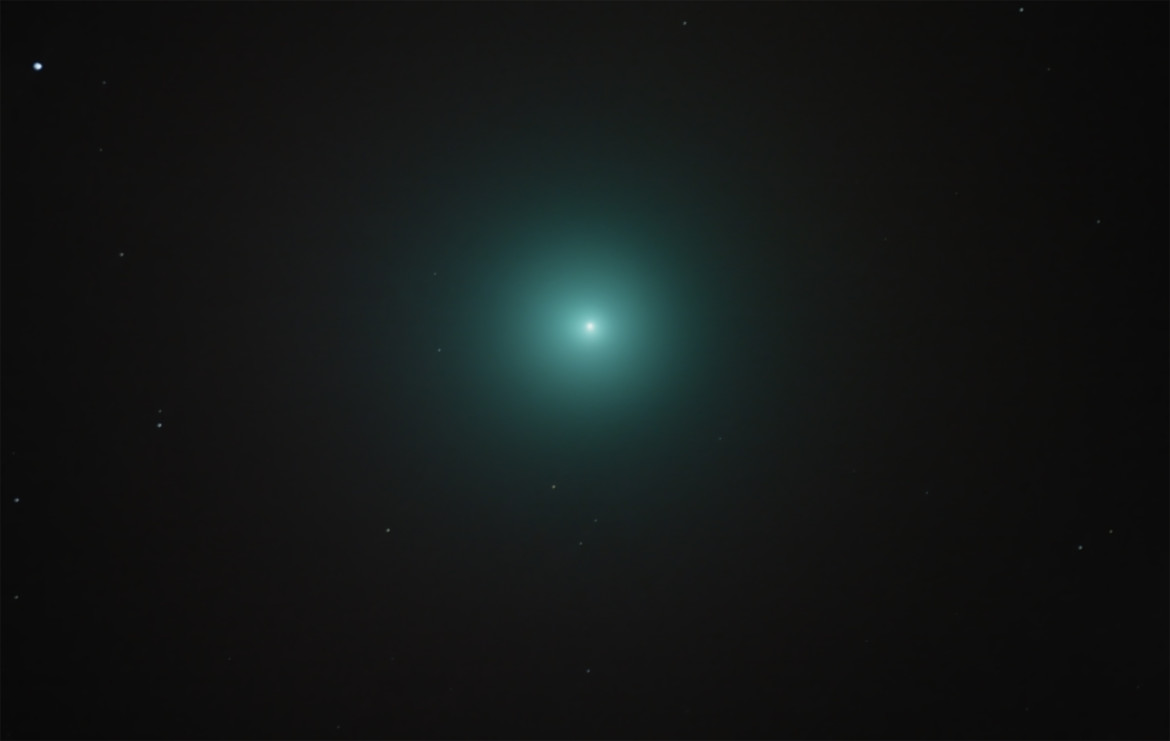Observing
Here is a shot of the Moon and Venus together in the western sky, as promised in the previous post (well, my previous post). Enjoy! (tripod mounted camera with zoom lens set at 200mm)
Continue Reading
Here’s a shot I took of the Moon and Mars last night. They presented a lovely pairing low in the west just at dusk, while Venus shone brightly high above them. Go outside tonight and see how the Moon has traveled up much closer to Venus. (photo is hand held with 200mm lens)
Fantastic auroral display tonight. These images were taken northwest of Hamilton, near Westover. The aurora was visible naked eye, but I couldn’t see colour.
Comet C/2014 Q2 (Lovejoy) passed within about a degree of open cluster NGC 457, the E.T. Cluster, the week of March 9, 2015. This image is from Monday March 9, 2015, approx. 9:00 pm to 9:55 pm from Caledonia ON.
M103, another open cluster, is visible at far right. The bright star Delta Cassiopeiae is near lower right. The red emission nebula, Sh2-188, is faintly visible near the comet. North is towards the lower right.
This is a stack of 33 1-minute exposures at ISO 1600 and f/2.8.
I used my Canon 40D DSLR with an Astronomik CLS light pollution clip-filter and my Tamron 300mm f/2.8 telephoto lens on my SP EQ mount.
This was a lot of hard work processing this image; about a dozen iterations of layering and masking….. not including the gradient blending I had to do to flatten the field from side to side a bit better.
Last night’s full moon was the smallest full moon of the year. We’ve heard it called the micro-moon ormini-moon. This March 5, 2015 full moon lies about 50,000 kilometers (30,000 miles) farther away from Earth than will the year’s closest full moon – the full supermoon and Northern Hemisphere’s Harvest Moon – on September 28. The March 5 moon is the year’s farthest full moon because full moon and lunar apogee – the moon’s farthest point in its monthly orbit – both fall on the same date.
Continue Reading
A 22° halo is a halo, one type of optical phenomenon, forming a circle with a radius of approximately 22° around the Sun, or occasionally the Moon (also called a moon ring or winter halo). It forms as sunlight is refracted in millions of randomly oriented hexagonal ice crystals suspended in the atmosphere. The halo is large; the radius is roughly the size of an outstretched hand at arms length. As light passes through the 60° apex angle of the hexagonal ice prisms it is deflected twice resulting in deviation angles ranging from 22° to 50°. The angle of minimum deviation is almost 22° (or more specifically 21.84° on average; 21.54° for red light and 22.37° for blue light). This wavelength-dependent variation in refraction causes the inner edge of the circle to be reddish while the outer edge is bluish. As no light is refracted at angles smaller than 22° the sky is darker inside the halo. A 22° halo may be visible on as many as 100 days per year—much more frequently than rainbows.
My entire neighbourhood is surrounded by 80+ foot trees, so Tonight’s Spectacular Triple-play Conjunction is partially hidden by trees, however, I love the effect that I was able to achieve!
The Moon, Venus and Mars formed a beautiful grouping in the western sky above Hamilton tonight. It was well worth the risk of frostbite to view. I snapped this photo with a point & shoot camera from our driveway.
I turned to face north just before 7:00 pm to catch a very bright pass overhead by the International Space Station. I snapped a photo of the ISS (it’s the streak in the image below) as it passed Jupiter in the ESE.
Comet C/2014 Q2 (Lovejoy) on January 13, 2015, approx. 7:30pm to 8:30pm from Caledonia ON.
I used my Canon 40D, Astronomik CLS light pollution clip-filter and my Tamron 300mm f/2.8 telephoto lens on my Super-Polaris EQ mount.
Settings: ISO 1600, f/2.8.
Post-processing included curves adjustments, colour balancing, and multiple iterations of layering, masking & blending to smooth out the head of the comet a little better.
Note the comet’s tail pointing downward as per the images’ orientation; eastward away from the sun’s direction.
The image on the left is a composite of 5 1-minute exposures and is stacked on the background stars. The image on the right is a composite of 8 1-minute exposures stacked on the head of the comet, hence the star trailing, indicating the comet’s direction. North is to the left in both images.
With -15° degree weather astrophotography in January is not for the faint of heart! However, with so few clear nights these past few months it’s worth braving the elements for a personal encounter with comet C/2014 Q2 (Lovejoy). Lovejoy is now naked eye visible but its very faint and hard to spot unless you know exactly where to look. From my somewhat light polluted skies in Dundas the comet can be seen as a tiny, dim dot right of Orion. With a telescope the view improves and using my 8″ scope Lovejoy can be seen as a fuzzy patch but unmistakable comet. With the wonders of auto-guiding, digital photography, and stacking software more detail can be explored through the photons captured by CCD sensor.
Continue Reading










